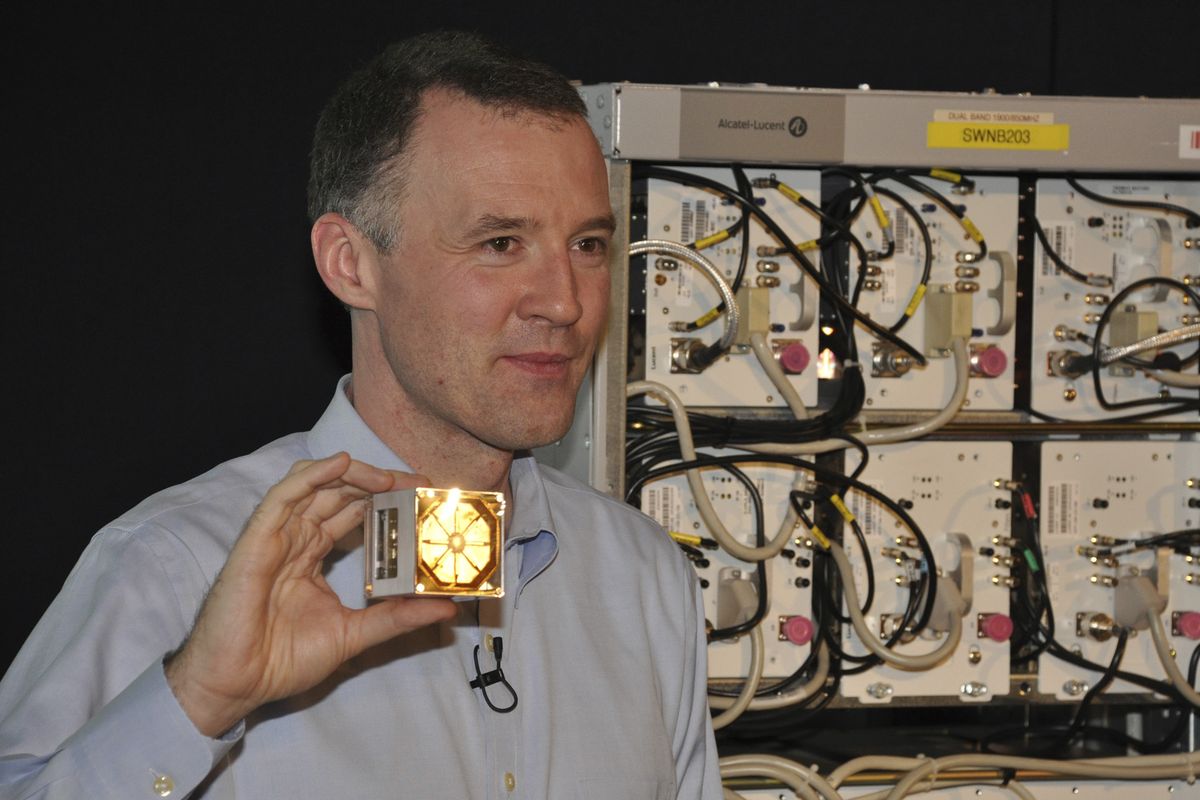Towerless service
Wireless advances mean smaller antennas in future

As cell phones have spread, so have large cell towers – those unsightly stalks of steel topped by transmitters and other electronics that sprouted across the country over the last decade.
Now the wireless industry is planning a future without them, or at least without many more of them. Instead, it’s looking at much smaller antennas, some tiny enough to hold in a hand. These could be placed on lampposts, utility poles and buildings – virtually anywhere with electrical and network connections.
If the technology overcomes some hurdles, it could upend the wireless industry and offer seamless service, with fewer dead spots and faster data speeds.
Some big names in the wireless world are set to demonstrate “small cell” technologies at the Mobile World Congress, the world’s largest cell phone trade show, which started Monday in Barcelona, Spain.
“We see more and more towers that become bigger and bigger, with more and bigger antennas that come to obstruct our view and clutter our landscape and are simply ugly,” said Wim Sweldens, president of the wireless division of Alcatel-Lucent, the French-U.S. maker of telecommunications equipment.
“What we have realized is that we, as one of the major mobile equipment vendors, are partially if not mostly to blame for this.”
Alcatel-Lucent is at the show to demonstrate its “lightRadio cube,” a cellular antenna about the size and shape of a Rubik’s cube, vastly smaller than the ironing-board-sized antennas that now decorate cell towers. The cube was developed at the famous Bell Labs in New Jersey, birthplace of many other inventions when it was AT&T’s research center.
In Alcatel-Lucent’s vision, these little cubes could soon begin replacing conventional cell towers. Single cubes or clusters of them could be placed indoors or out and be easily hidden from view. All they need is electrical power and an optical fiber connecting them to the phone company’s network.
The cube, Sweldens said, can make the notion of a conventional cell tower “go away.” Alcatel-Lucent will start trials of the cube with carriers in September. The company hopes to make it commercially available next year.
For cell phone companies, the benefits of dividing their networks into smaller “cells,” each one served by something like the cube antenna, go far beyond aesthetics. Smaller cells mean vastly higher capacity for calls and data traffic.
Instead of having all phones within a mile or two connect to the same cell tower, the traffic could be divided between several smaller cells, so there’s less competition for the cell tower’s attention.
“If it is what they claim, lightRadio could be a highly disruptive force within the wireless industry,” said Dan Hays, who focuses on telecommunications at consulting firm PRTM.
Rasmus Hellberg, director of technical marketing at wireless technology developer Qualcomm Inc., said smaller cells can boost a network’s capacity tenfold, far more than can be achieved by other upgrades to wireless technology that are also in the works.
That’s sure to draw the interest of phone companies. They’ve already been deploying older generations of small-cell technology in areas where a lot of people gather, like airports, train stations and sports stadiums, but these are expensive and complicated to install.
LM Ericsson AB, the Swedish company that’s the largest maker of wireless network equipment in the world, is also introducing a more compact antenna at the show, one it calls “the first stepping stone towards a heterogeneous network.”